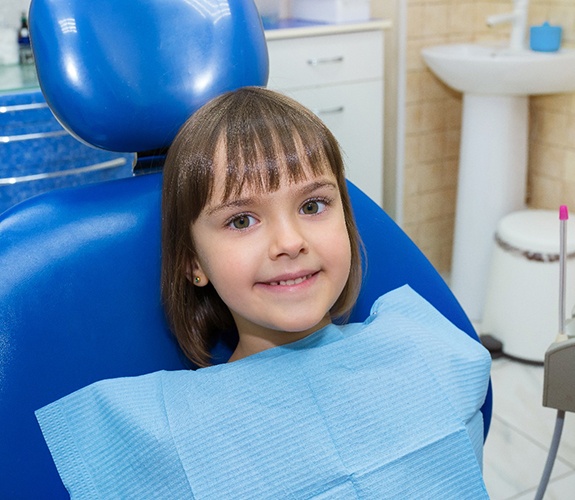
Phase 1 Orthodontics – Naperville, IL
An Early Start Toward a Beautiful Smile
Did you know that orthodontic treatment should be addressed as early as possible? At Grand Dental – Naperville, our team recommends getting a Phase 1 orthodontic consultation before your child turns 7 years old. When you meet with our orthodontic specialist, we can identify any developmental issues with your child’s jaw or teeth alignment and start treatment early if necessary. It’s just another way we provide total dental care for everyone in your family. Is your child about the right age for an orthodontic examination? Contact our office today!
Why Choose Grand Dental – Naperville for Phase 1 Orthodontics?
- Skilled Dental Team with Years of Advanced Training
- Years of Experience Working with Children
- Variety of Customized Orthodontic Solutions
Why Your Child Should See an Orthodontist Before Age 7

By the time your child reaches the age of 7, some of their permanent teeth will have started to erupt; however, they may still have some of their baby teeth. At this time, an orthodontist can spot potential issues with jaw growth and bite alignment. While your child’s mouth is still developing, it is easier to alter their teeth and jaws, which is why finding orthodontic problems early is important. As a result, the American Association of Orthodontists highly recommends seeing an orthodontist when your child becomes 7 years old to enable us to resolve these developmental issues while they’re simpler to treat.
Does My Child Need Phase 1 Orthodontics?

Many early orthodontic issues can be identified only by a trained, certified specialist. A general dentist or pediatric dentist may be able to recognize the need for orthodontic intervention during a routine checkup; however, an orthodontic specialist will be able to diagnose the issue and provide treatment. As a parent, you may also notice symptoms that can serve as a warning that orthodontic care is necessary. Examples of these symptoms include the following:
- Crooked or overcrowded teeth
- Significant gaps between the teeth
- Protruding teeth
- A disproportionate jaw
- A speech impediment
- Frequent difficulty breathing
How Does Phase 1 Treatment Work?

Like many other dental treatments, we customize Phase 1 orthodontics to each individual child based on the current alignment and other dental concerns. We utilize different types of orthodontic appliances for various situations. For example, we may recommend an expander to gradually widen your child’s upper jaw or palate to allow plenty of room for the adult teeth to come in properly. For children who have lost a baby tooth too soon, a space maintainer can prevent nearby teeth from shifting into the gap. And, yes, in certain cases, young children may wear braces for a short amount of time.
Overall, Phase 1 treatment typically lasts between 10 to 14 months, but the timeline will vary for each child. After this first stage of orthodontic care, we will continue to keep a close eye on the growth and development of your child’s mouth. If needed, we can begin Phase 2 orthodontics around the age of 11, after most of the permanent teeth have erupted.